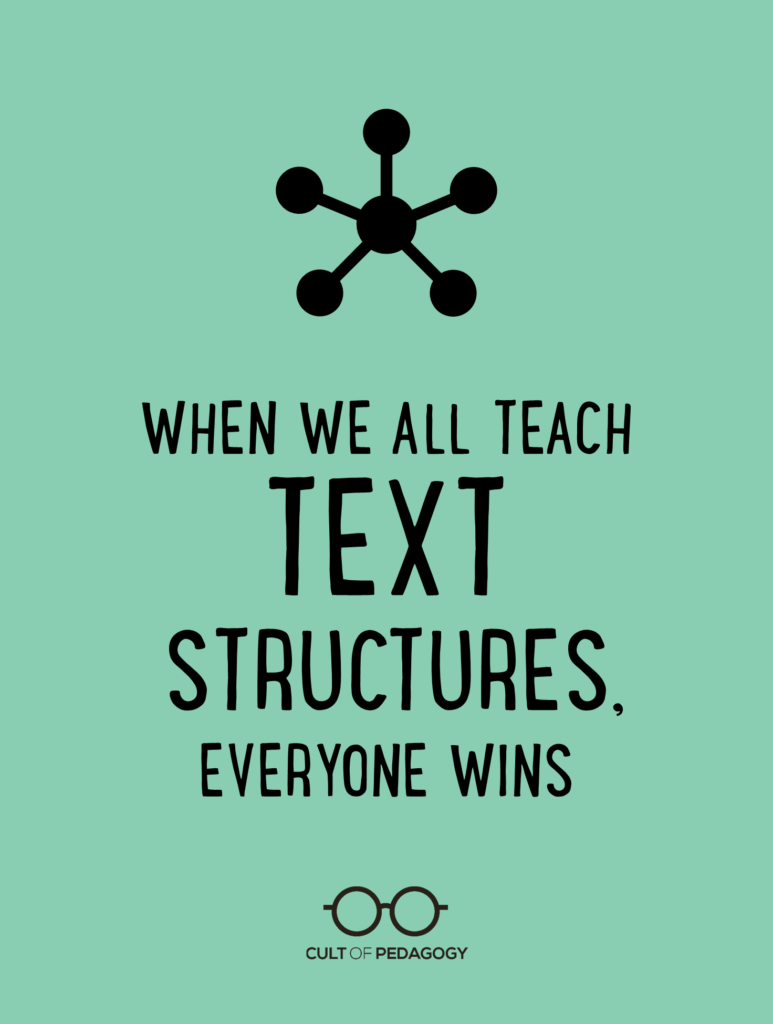When We All Teach Text Structures, Everyone Wins

It’s a given that we want our students to read well.
We want them to handle challenging material strategically, to comprehend all of its nuances clearly, to break it down and analyze it, and more than anything, to remember what they read.
Lately, the mandate to support student reading has been directed outside the English language arts classroom: Teachers of history, science, and other subjects are now expected to weave literacy instruction into their teaching of content. But how should they do that? What are the most effective ways to help students learn to read challenging content-area texts?
One way is to teach them text structures. This is different from text features — the headings, subheadings, and supporting visuals that writers use to highlight key points. A text structure is its overall organization: Common text structures are cause and effect, sequence, and compare/contrast. And research shows that when students are explicitly taught to identify text structures while they read, they understand the material better and retain more of it after reading (National Institute for Literacy, 2007).
This video shows you how to teach text structures:
Tools to Get You Started
Graphic Organizers
Teaching text structures is much easier with the help of graphic organizers. The organizers featured in this video, along with several others, are included in this Graphic Organizer Multi-Pack, available now in my Teachers Pay Teachers Store.
Signal Terms
Students will be able to identify text structures more easily if they become familiar with signal terms, words and phrases that frequently occur in certain types of texts. Here’s a free chart from the University of Tennessee’s Center for Literacy, Education & Employment that shows common text structures with their signal terms: Informational-Text-Structures
Further Reading
What Content-Area Teachers Should Know About Adolescent Literacy
National Institute for Literacy, 2007
Every teacher interested in supporting students’ reading and writing should grab a copy of this free 61-page PDF. It includes the strategies mentioned here, plus dozens of others for supporting student reading and writing in the content areas.
20 Strategies to Teach Text Structure
Kristi Orcutt, ESSDACK.org
This PDF provides some fantastic ideas for teaching students how to recognize text structures and use them to improve their comprehension.
If you found this article useful, I’d love to have you come back for more. Join my mailing list and get weekly tips, tools, and inspiration — in quick, bite-sized packages — all geared toward making your teaching more effective and joyful. To thank you, I’ll send you a free copy of my new e-booklet, 20 Ways to Cut Your Grading Time in Half. I look forward to getting to know you better!
